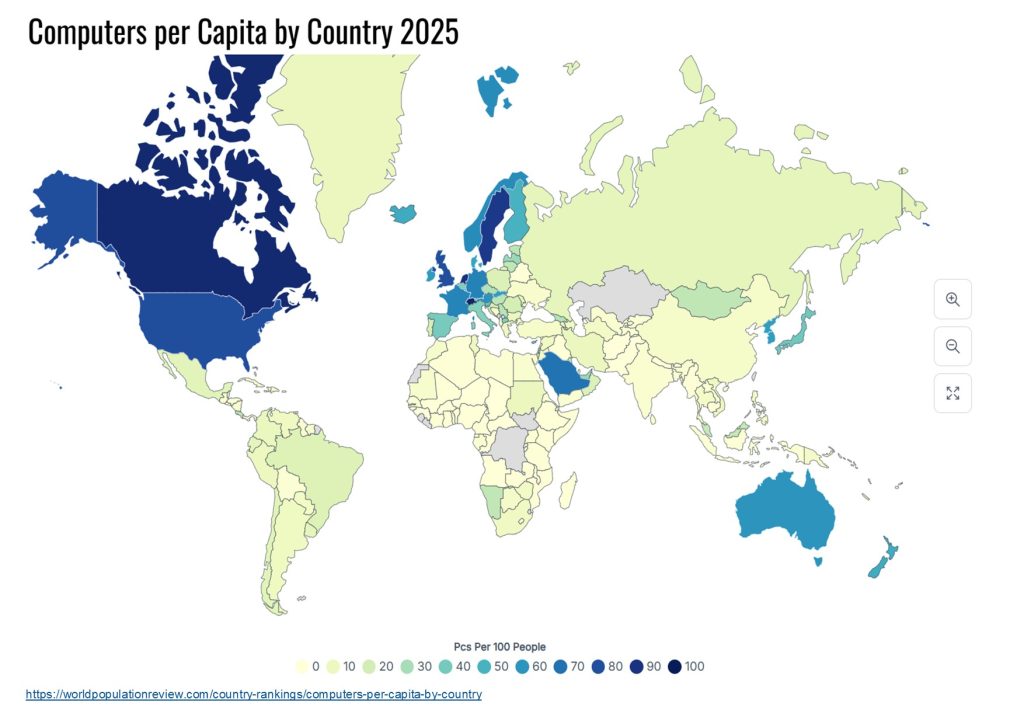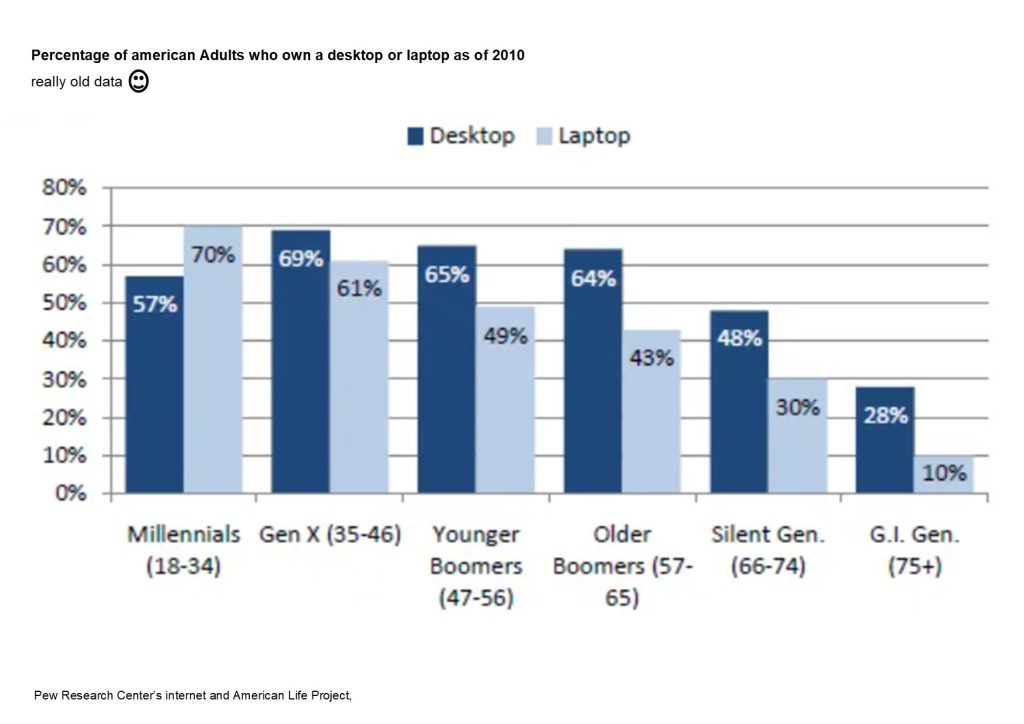To acquire digital literacy and to engage online, there is the basic assumption that the learner owns or at least has access to a computer to start with, right? Then, let’s check how many people have or own a computer (desktop, laptop, tablet, etc.). Figures vary by regions and countries and quality but this map in Fig. 1 is useful to provide us with an overview of the situation globally.https://worldpopulationreview.com/country-rankings/computers-per-capita-by-country
Fig. 1

Usage definitely will vary between Baby Boomers (Born: 1946-1964), Generation X (Born: 1965-1976), Millennials (Born: 1977-1994) that is the first “digital natives” or Generation Z (Born: 1995-2012) that are social media savvy (Fig.2). https://www.pewresearch.org/internet/2011/02/03/generations-and-their-gadgets/

Top most among the factors influencing per capita computer ownership is technology infrastructure before level of economic development, education, and cultural values, etc. (World population review). As computers need reliable power sources and internet connections in order to function at full capacity, countries with stronger technological infrastructures are more likely to boast higher computers per capita rates. The five countries with the highest computers are Switzerlands – 96.2%, Canada – 94.3%, Netherlands – 91.2%, Sweden – 88.1%, United States – 80.6%.
Computer ownership therefore plays a significant role in shaping online engagement as it enables access to online platforms, participation in virtual communities and meetings, training and learning, social media, e-commerce, etc.
——————————–
About Felicia O. Akinyemi
I am a life-long learner and enjoy creating online geospatial learning resources, incl. maps/apps.
https://www.researchgate.net/profile/Felicia_Akinyemi
https://feliciaakinyemi.weebly.com